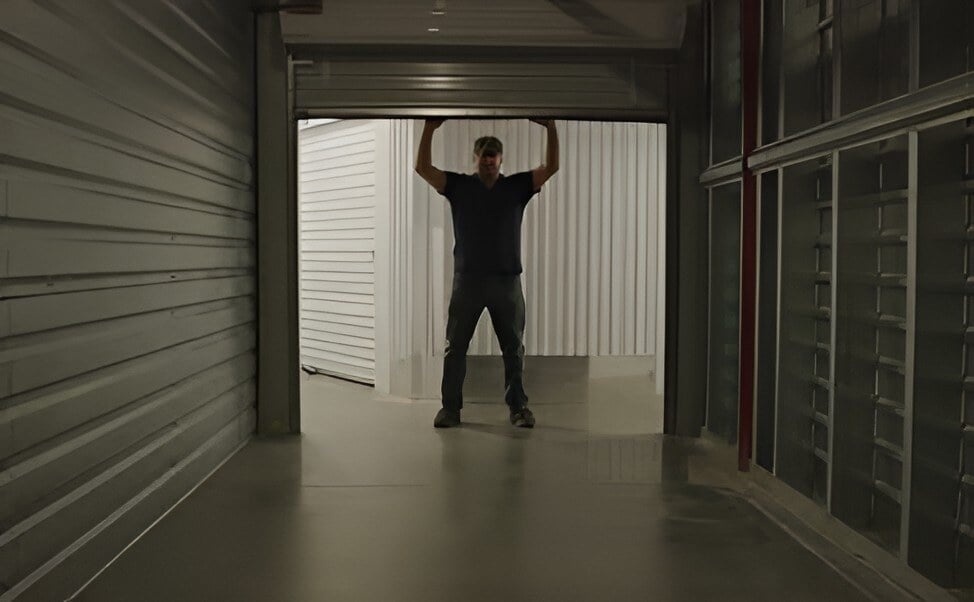Who's Who In Self-Storage: David Dodge, Paramount Metal Systems
Is self-storage still a local business? While many developers have long adhered to the real estate principle that the three most important factors of site selection are “location, location, location,” David Dodge, president of Little Rock, Ark.-based Paramount Metal Systems, believes the internet has somewhat “taken away” the local aspect of self-storage.
Though most renters still prefer to store their belongings near their homes or workplaces, with 69.2 percent traveling 19 minutes or less to their storage units, according to the SSA’s 2023 Self Storage Demand Study, nearly 30 percent are 20 minutes or farther away from the self-storage facility where they rent units. The ability to search online for “self-storage near me” likely provides prospective customers with more options than they were aware of, but Dodge, who entered the metal building industry in 1982, joined Paramount in 2004, and has contributed to more than $500 million in revenue over a 41 year span, was more so referring to the internet’s impact on the pre-development and development aspects of the business than the end user.
Endless Options
“You’d talk to the people in your region 40 years ago,” Dodge says about obtaining development insights, but the endless amount of information on the worldwide web has greatly enlarged the playing field, causing plenty of inexperienced self-storage developers to suffer from cognitive overload or information paralysis. Internet access to content on development is so plentiful—and diverse—that it’s “too much to process,” he says, pointing out that his Google search of “self-storage companies near me” produced more than 314 million results. “People don’t know who or what to believe. There are so many options that it’s hard to make choices.”
Their inability to “qualify information” prompts them to attend self-storage trade shows and speak with the various vendors to obtain professional guidance. However, Dodge states that they may not leave the trade show floor with a better understanding because there have been so many new entrants into the industry in the last few years.
In his experience, the new-to-storage developers then tend to request price quotes for their proposed facility from multiple design/build companies. Instead of “interviewing” the builders to get to know them, then choosing two or three potential contenders based on compatibility, Dodge has found that price is becoming the deciding factor for selecting a vendor. The problem with this price-quote approach is simple: “If you give a project to five different companies, you will get five different variations,” he says, adding that developers’ assumptions can add to the disconnect. “It’s not always an apples-to-apples comparison.”
For instance, Dodge poses this hypothetical scenario: The price quotes come in and the developer decides to go with the builder with the lowest quote, only to find out that the quote didn’t include multiple key components for the project. The cost for those items or any other omitted components would then need to be added to that initial quote. After tallying the additional costs, it may no longer be the lowest quote of the bunch. Therefore, developers must compare what’s provided with the price.
“In the old days, we used to go through every detail of the job,” Dodge says, adding that thoroughness yields a more accurate estimate and can prevent change orders down the line. “The least expensive road isn’t always best.”
Alternatively, when it comes to providing ballpark figures, Dodge says it’s hard to hit the mark. “When you buy groceries, the cost depends on what you put into the cart,” yet one thing should be obvious: The more units, square footage, features, amenities, and high-end finishes included in a project, the more it will cost to develop.
Cost Creep
 From print to digital and single-story block buildings to the “architectural masterpieces” of the present, self-storage has certainly evolved since Dodge entered the industry. However, he’s “not against progress,” but rather opposes the climbing costs associated with building to today’s codes and municipality preferences.
From print to digital and single-story block buildings to the “architectural masterpieces” of the present, self-storage has certainly evolved since Dodge entered the industry. However, he’s “not against progress,” but rather opposes the climbing costs associated with building to today’s codes and municipality preferences.
Although “75 percent of facilities are being built with the same materials” that were used to build first- and second-generation self-storage facilities, he says that costs have increased due to the newest building codes and the aesthetics arms race. “As a partner in multiple facilities, I know these items have added to the costs,” Dodge says, noting that not all municipalities have adopted the 2023 international building code (IBC). With costs on the rise, builders must either pass the increases on to their clients or find ways to reduce costs while meeting their clients’ needs.
Unfortunately, doing the latter oftentimes means cutting corners. “We’ve adapted as creative, out-of-the-box thinkers,” he says, “to encompass a broader stroke to offset these costs.”
As for increasing rates to offset inflation, Dodge says, “We don’t want to pass those along,” but volatility in the world markets has caused volatility in pricing. “We have no control over that.”
Dodge doesn’t understand why the practice of passing increased costs on to customers is acceptable in other sectors and not self-storage, but he does have a straightforward analogy to provide perspective: If you go to a seafood restaurant and you really want to eat lobster, you’ll pay the market price. If you can’t afford it, you order something within your budget.
“Everyone wants the Cadillac for the Chevrolet price,” he says. “It doesn’t work that way. You get what you pay for. If the difference brings you pause, maybe you shouldn’t proceed.”
Dodge goes on to say that self-storage development is “not $50 per square foot like it was 20 years ago. The overwhelming explosion of new facilities built has moved that cost to a minimum of 30 percent or higher.”
Be Diligent
Whether doing research, looking into material costs, choosing a vendor, or selecting a site, Dodge encourages developers to rely on the expertise of seasoned, self-storage professionals and reputable sources to make better informed decisions. This is especially important when it comes to site selection. Preventing overbuilding is imperative and requires plenty of due diligence.
For example, Dodge points out that there are five or six new self-storage facilities coming on line in the greater Little Rock metro. They are all within three to five miles of each other, with some even closer, which doesn’t bode well in a stagnant growth market. “The city hasn’t grown enough for that amount of new supply,” he says, adding that feasibility studies conducted by an unbiased third party are essential—not optional—for the continued success of the entire industry.
 Due diligence and feasibility studies aren’t just prerequisites for new developers either; the most astute self-storage developers realize that each project is unique and there’s knowledge to be gained from each one. As such, Dodge likens self-storage development to deer hunting: The first time you go out into the woods, even though you’re prepared, you may not get to pull the trigger. When you finally shoot one, you may think you know everything about hunting, so you go looking for another buck. If you don’t bag another and find yourself stuck in a rut, it may be necessary to learn some new tips.
Due diligence and feasibility studies aren’t just prerequisites for new developers either; the most astute self-storage developers realize that each project is unique and there’s knowledge to be gained from each one. As such, Dodge likens self-storage development to deer hunting: The first time you go out into the woods, even though you’re prepared, you may not get to pull the trigger. When you finally shoot one, you may think you know everything about hunting, so you go looking for another buck. If you don’t bag another and find yourself stuck in a rut, it may be necessary to learn some new tips.
“In the beginning, building a facility starts with an idea (Phase 1),” he says. “You’re not sure how to go about that idea because you have so many choices to choose from, but in the end, you decide and jump in (Phase 2). After you have built your first facility and reap the benefits from it, now you have become an expert rather than a novice and earned the right to call yourself a developer (Phase 3). Success in doing it again sometimes requires reverting back to Phase 1.”
–
Erica Shatzer is the editor of Modern Storage Media.
More Content
Popular Posts
Recent Posts
Senate Bill 709 (SB709) has many in the...
In January, self-storage industry veteran...
In April 1984, the first non-stop commercial...
Raise your hand if you’ve ever made plans,...
Everyone knows it: Investing in real estate...
They say when one door closes, another one...
Like its name implies, Surprise, Ariz., a...
Self-storage has become as reliant on the...











